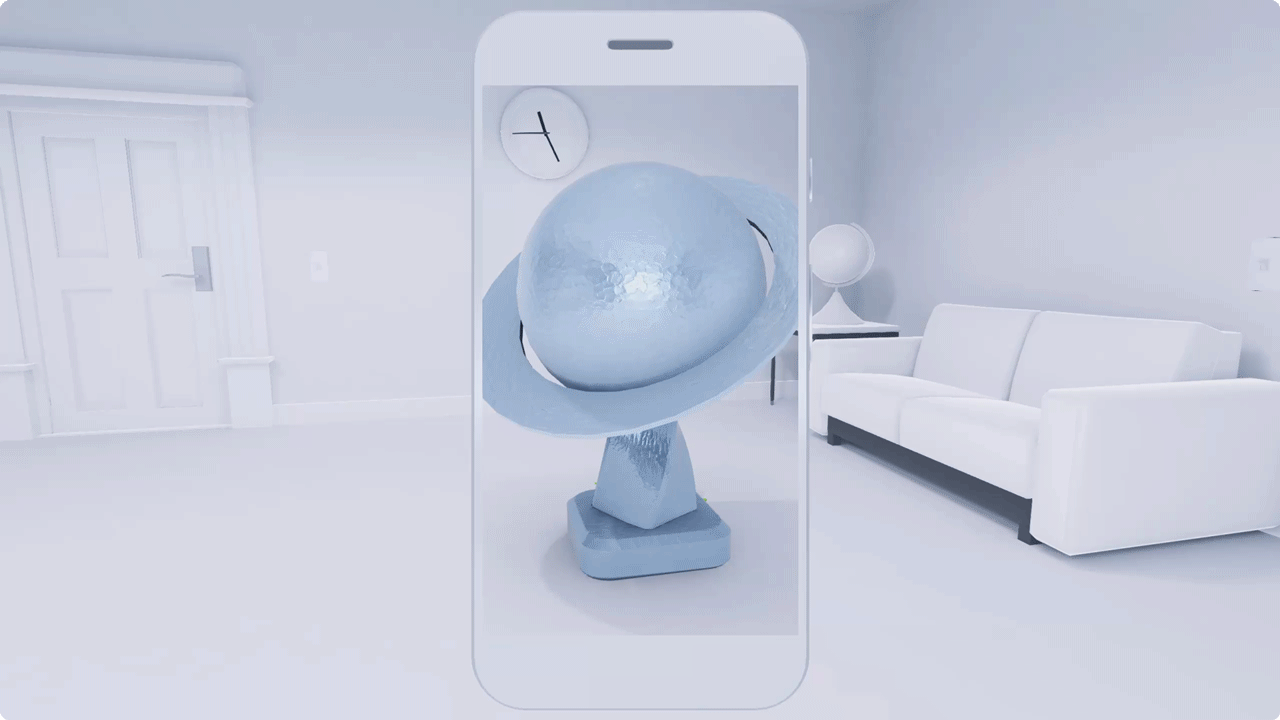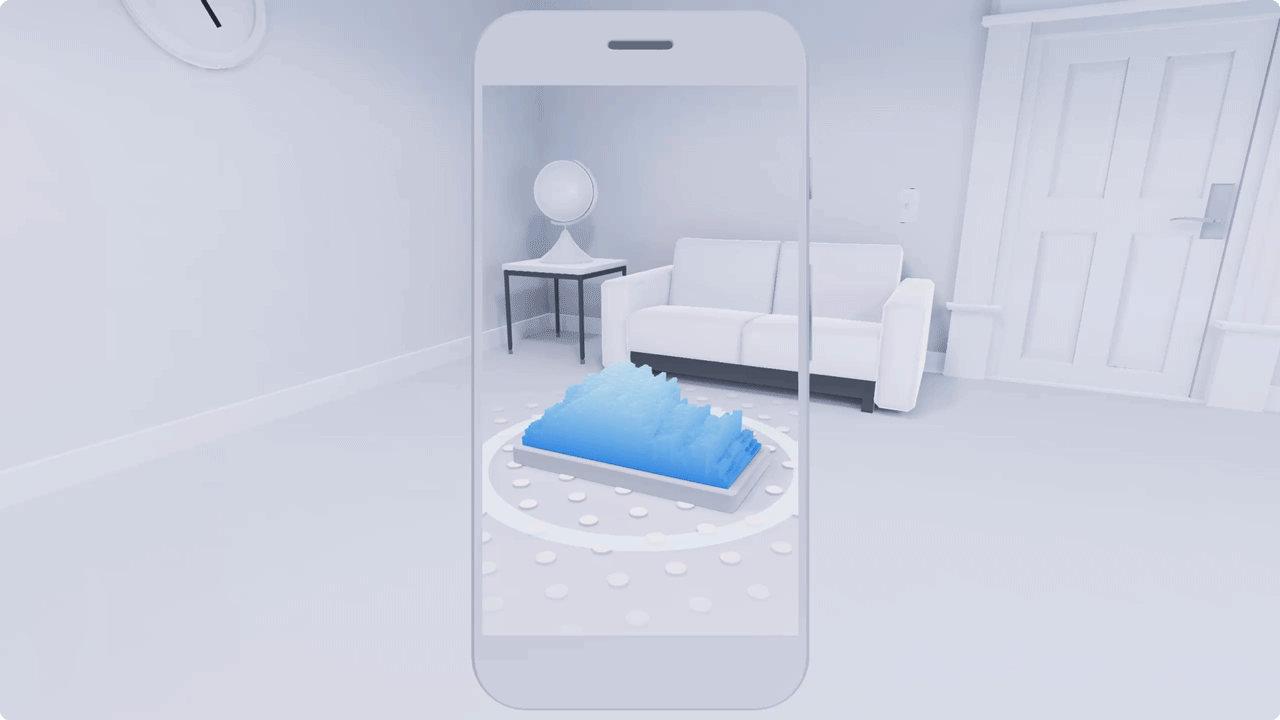Encourage movement
Many users have never experienced a 360-degree virtual environment before. Others are just starting to figure out how to move around and interact inside them. When users encounter their first AR experiences, they’ll often forget they can move around.
If your experience demands exploration, remind users they can move around. In those cases, give users a goal that can only be completed by moving. Place a virtual object on the edge of the screen, encouraging them to move toward it.

Hide objects behind virtual or physical objects. It’s a fun way to encourage the user to move.
Types of movement
In AR experiences, there are four different ways that a user can move.
- Seated, with hands fixed
- Seated, with hands moving
- Standing still, with hands fixed
- Moving around in a real-world space
For each user case, try to:
- Let users know what movements will trigger the app.
- Guide them through the types and range of movement possible.
- Make easy transitions from one pose or movement to another.
- Design for comfort. Try to avoid making the user do anything that’s physically demanding, uncomfortable, or too sudden.
- Try not to require movement until it’s necessary. Getting users to move is a great way to engage them, but let them ease into the experience.
Accessibility
If a user isn't able to move around, give them an alternative way to use your app.
For example, when the user is supposed to move closer to a target, give another way to access the target. Whenever it’s possible, let users tap objects and move them closer, or offer a reticle to help users reach faraway objects. Place text and instructions so they’re visible from every angle.
As users fatigue, they’ll want to move around less.

Let the user move and rotate an object in case they can’t physically move around it
